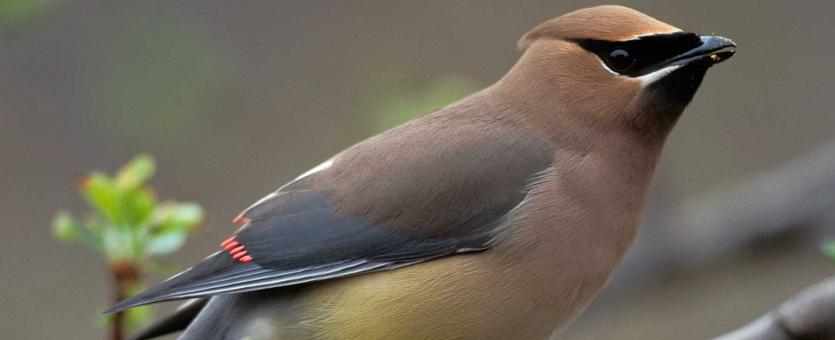
Cedar waxwing adult upperparts are brownish on the head to grayish brown on the back, with a black face and a thin black line behind the eye. The head has a sharp, fine crest which is occasionally raised straight up although usually sleeked back on the head. The underparts are yellow with the undertail feathers white. The secondary wing feathers have bright red tips (resembling sealing wax, hence the name), which are sometimes not visible, as are the bright yellow tips of the tail feathers. Voice is a short, high-pitched, whizzy zeeee or quick trill. Some people have difficulty hearing it.
Similar species: The Bohemian waxwing, more common to our northwest, occurs rarely and sporadically in winter in northern Missouri. Its plumage is very similar, but it is larger, darker gray, and has a rusty crissum (undertail coverts).
Length: 8¼ inches (tip of bill to tip of tail).

Statewide.
Habitat and Conservation
Common migrant usually observed in areas with flowering or fruiting shrubs and trees. This means you can see them in a variety of wooded areas, including parks and backyards, farms and orchards, and all kinds of natural, but usually open, forests. This species is relatively unafraid of approaching humans. Often the first sign of their presence is their high-pitched, thin whistles, made as a small flock flits around a tree eating berries.
Food
Cedar waxwings eat small fruits, such as wild grapes, serviceberry, deciduous holly, mulberry, and dogwood and poison ivy berries. Sometimes they become intoxicated when feeding on overripe, fermenting berries. In winter they eat cedar berries and other persisting tree fruits. They also eat petals and sap of shrubs and trees. They eat plenty of insects during breeding season, providing extra protein for their growing young. But they also feed berries to their young, which few bird species do.
Status
Common transient. As summer resident, rare statewide, but possibly only uncommon in the Ozark Border and Osage Plains Natural Divisions. Uncommon winter resident. Globally, there are only 3 species in the waxwing genus and family: the cedar and Bohemian waxwings we know in North America, plus the Japanese waxwing of eastern Asia. Some of their closest relatives are the silky-flycatchers, a mostly tropical family represented in the United States only by the phainopepla of the desert southwest.
Life Cycle
Gregarious nearly year-round, cedar waxwings only separate into pairs to reproduce. Couples court, sitting close and passing each other fruits, insects, and other treasures. Females build cup nests in trees out of twigs, grass, string, and other varied materials. Clutches comprise 2–6 eggs; these are incubated 11–13 days. At hatching, the young are helpless, but 14–18 days later, they can leave the nest. There are 1 or 2 broods a year. The oldest waxwing on record was 8 years old.
Human Connections
With their smooth gray, brown, yellow, and white, plus black, red, and yellow accents, waxwings are a joy to watch. Many have noted their “politeness” while foraging. Put out a pan of cornmeal mush mixed with currants, cranberries, blueberries, and grapes, and plant fruit-bearing trees and shrubs.
Ecosystem Connections
Cedar waxwings eat fruits whole and deposit the seeds later in their droppings. This helps spread native as well as invasive trees, shrubs, and vines. When cowbirds lay eggs in waxwing nests, their nest parasitism strategy fails since cowbird young cannot survive on the waxwings’ fruit-heavy diet.
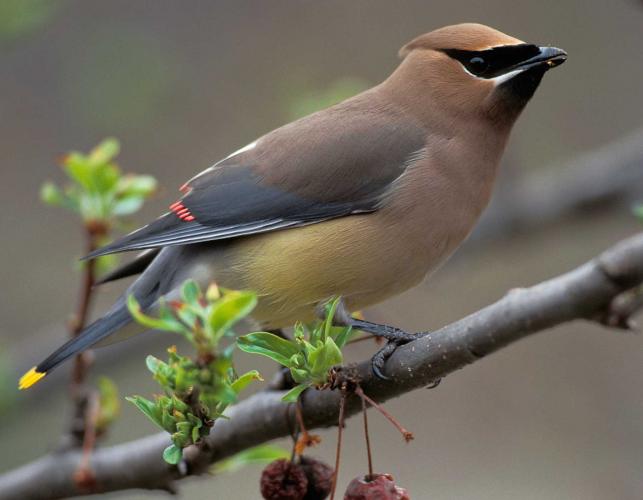
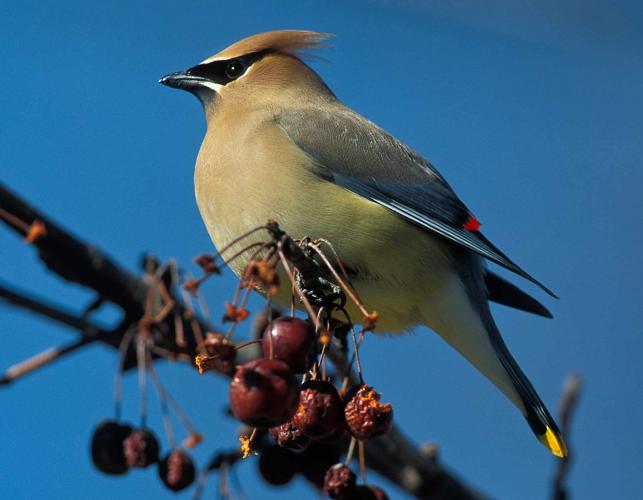
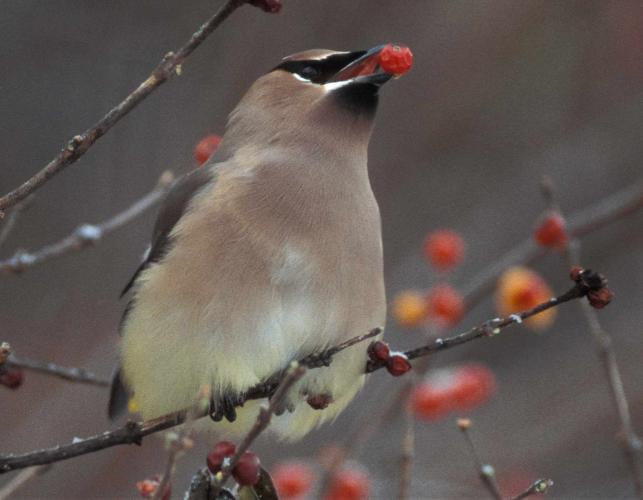
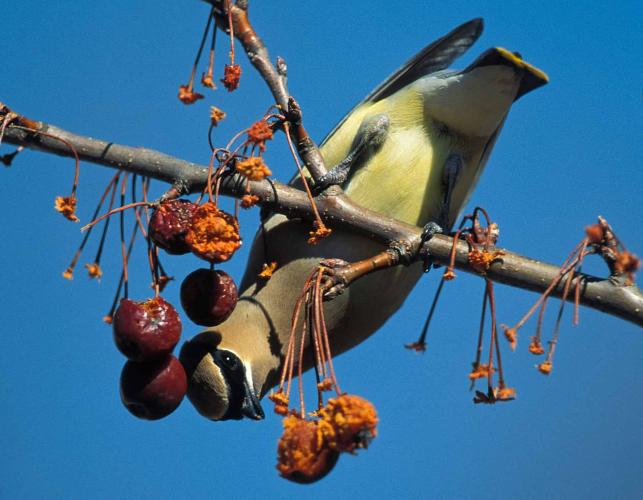
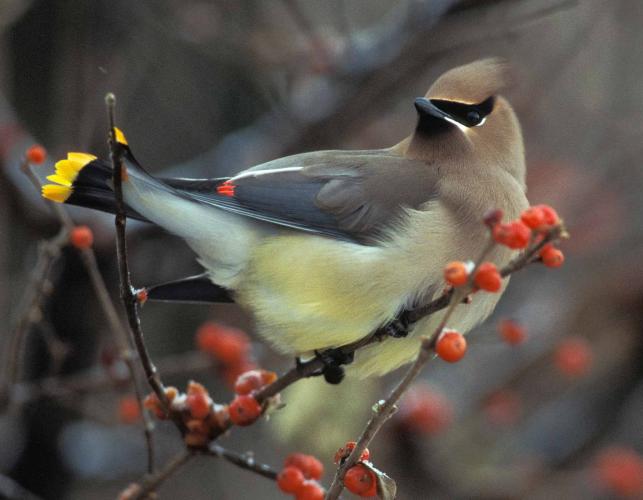
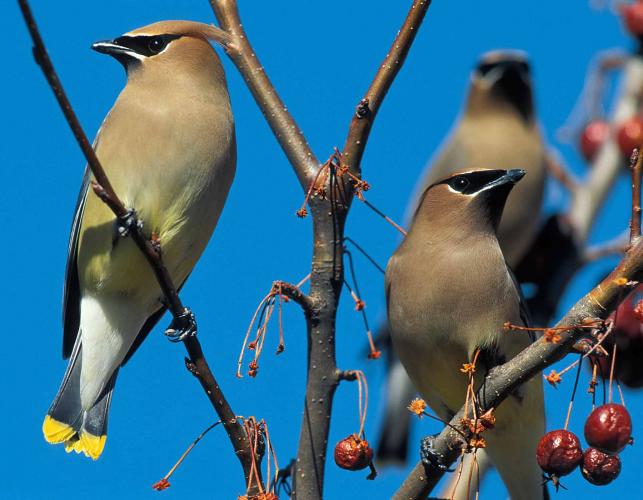
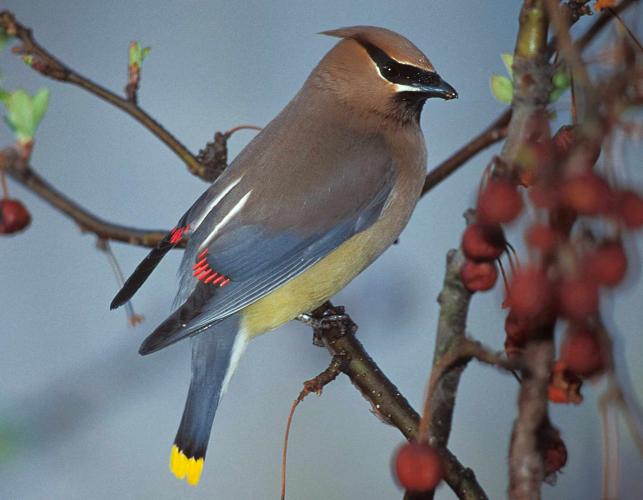
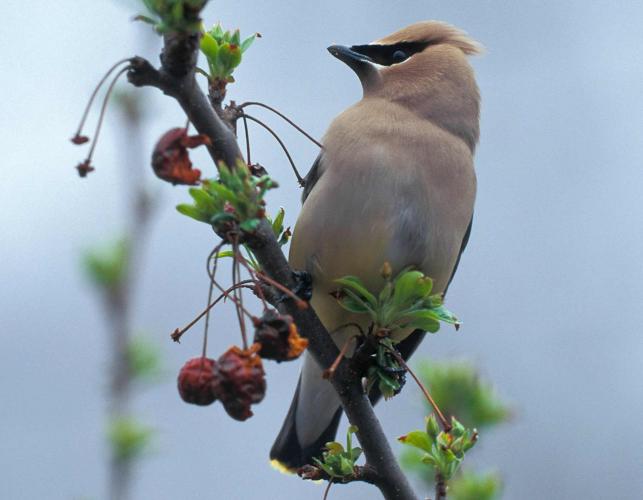
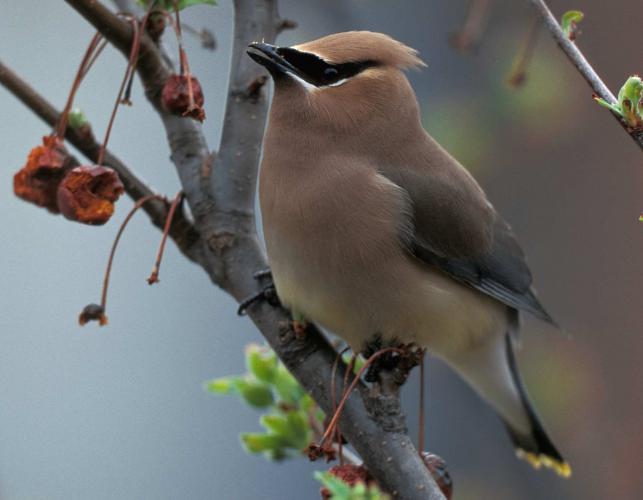

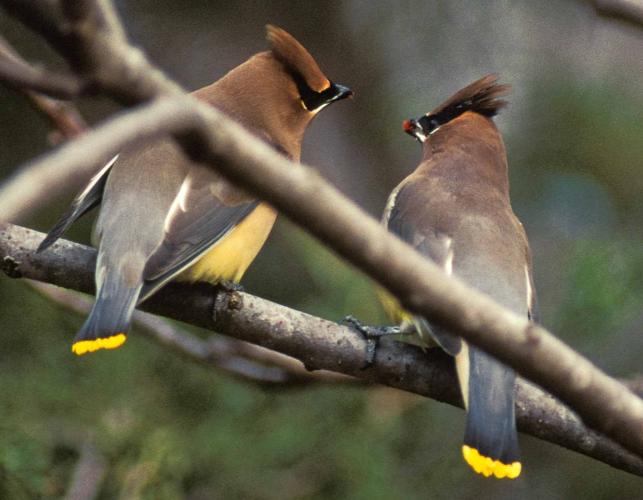
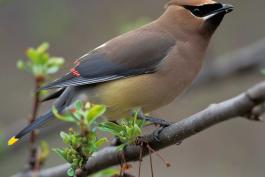
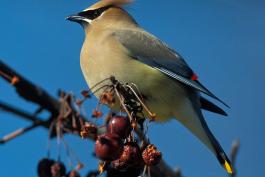
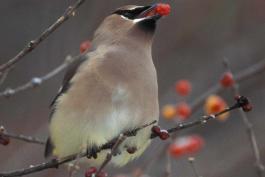
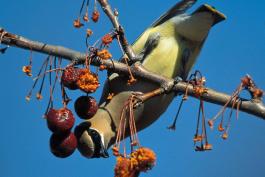
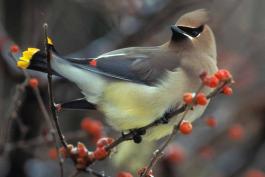
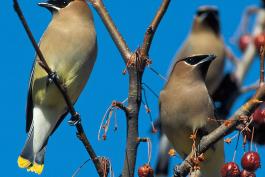
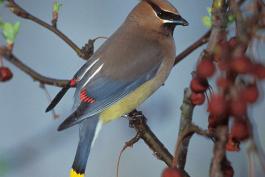
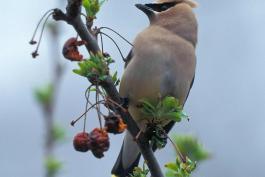
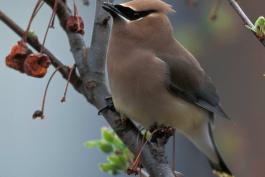
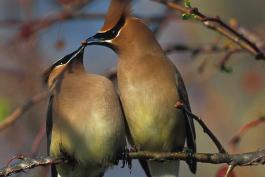
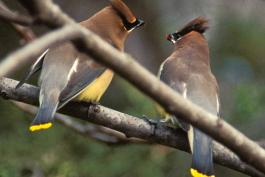
About 350 species of birds are likely to be seen in Missouri, though nearly 400 have been recorded within our borders. Most people know a bird when they see one — it has feathers, wings, and a bill. Birds are warm-blooded, and most species can fly. Many migrate hundreds or thousands of miles. Birds lay hard-shelled eggs (often in a nest), and the parents care for the young. Many communicate with songs and calls.





















